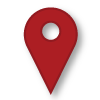Wi-Fi at the Branches
All of the Kingston Frontenac Public Library branches offer free Wireless Internet access.
Wi-Fi Limitations
- 2 gigabytes (GB) data usage per device per day. As a rough estimation, 2 GB is approximately 2 high definition movies (either streamed or downloaded).
- The limit applies across all branches. Moving to another branch in the same day will not reset the limit.
- The time that 2 GB of data will last depends on how you use the internet.
- Background processes like Windows Updates may use up your data limit faster than you expect.
KFPL has set limits on Wi-Fi use to ensure that the service is equitable and available to all.
How to Connect
- Find the open network called KFPLibrary listed on your device.
- Select the Sign in to a Wi-Fi network pop-up, then click Connect.
Internet Policy
Please read our Internet Policy and our stance on Internet Filtering for more information about KFPL’s Internet access.
Contact us if you need any help or would like to leave feedback.
Troubleshooting FAQ
I'm having trouble getting to the "Sign-In to Wi-Fi network" popup to appear on my Apple device. What can I do?
Sometimes a device may not get the signal from the KFPL network on its own. To prompt the popup, open Safari and type captive.apple.com into the address bar. This should trigger the popup to sign to the KFPL network.
I see a warning message about certificates when I open my browser. What should I do?
This message is generated by Internet Explorer to warn you that the security certificate being presented by our hotspot is not from a known certificate agency. That is OK.
I can’t see the KFPLibrary network. What should I do?
If you can see other networks when you are at the library but KFPLibrary doesn’t appear, please report this to staff at the InfoDesk. If you can’t see any networks, try repairing your wireless adapter by right-clicking the Wi-Fi icon in the Systray and clicking “Repair”.
Why can I access the Wi-Fi network in some parts of the library but not others?
Wireless Internet uses radio waves to send signals between devices on the network; these signals can be obstructed or absorbed by certain materials such as metal or concrete. Also, your wireless card may not have enough range to associate with the access point from every corner of the branch.




